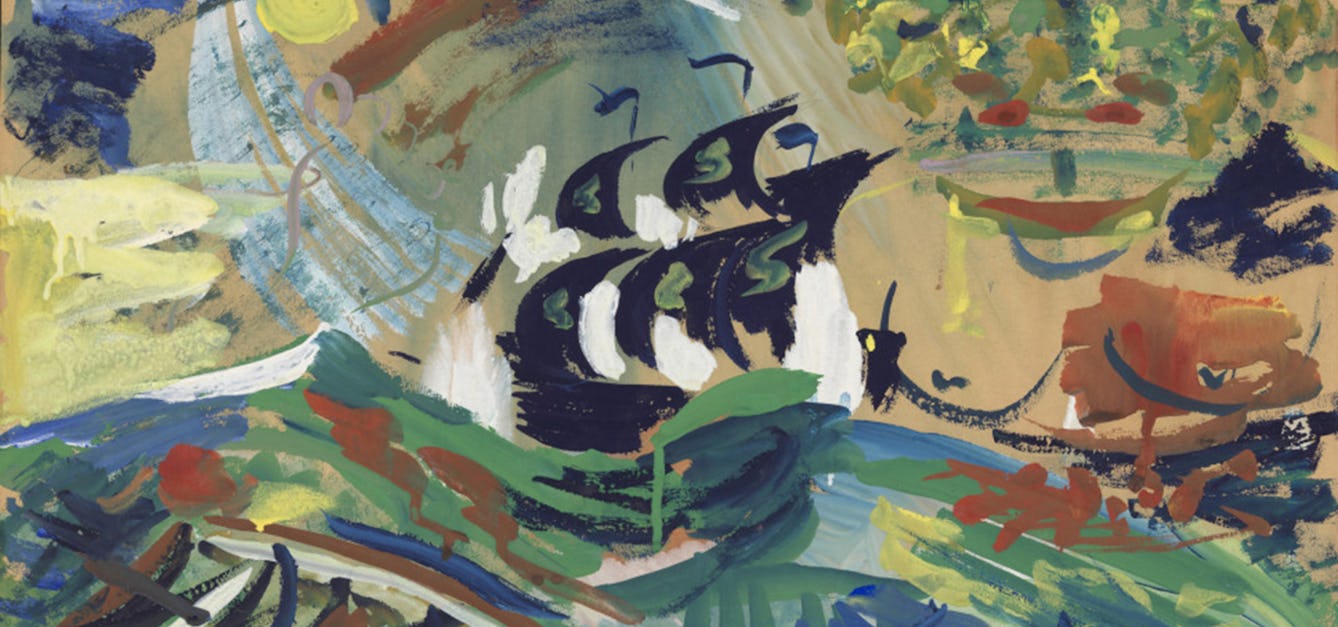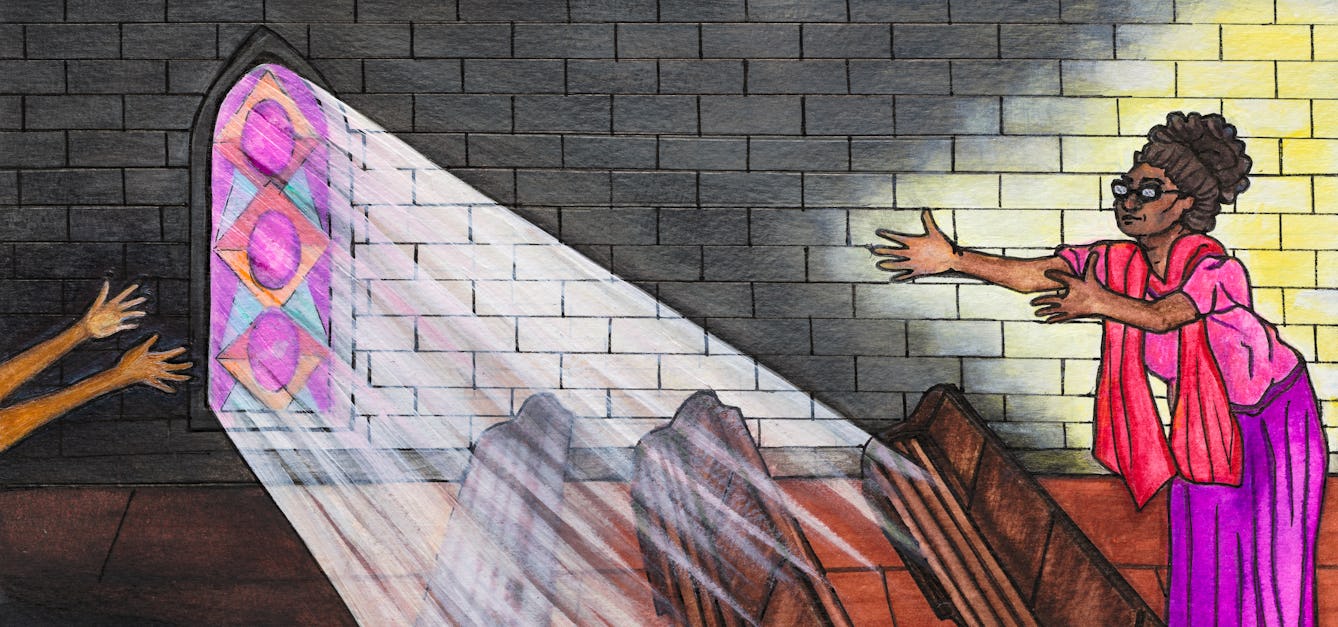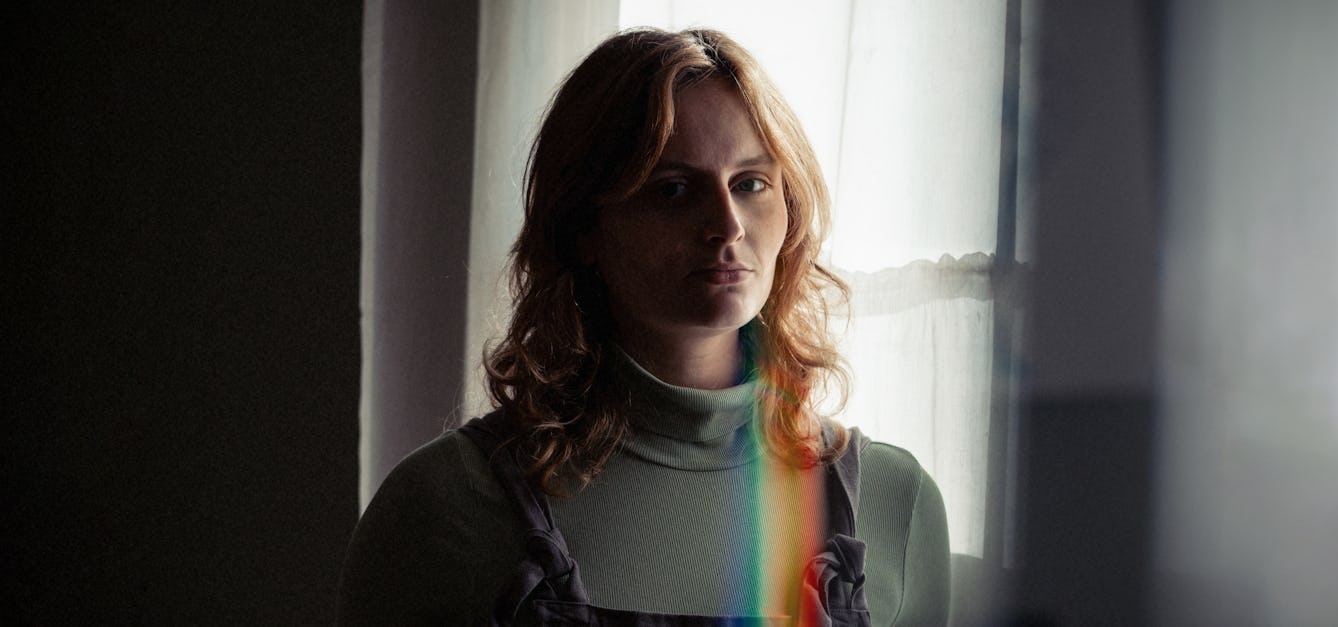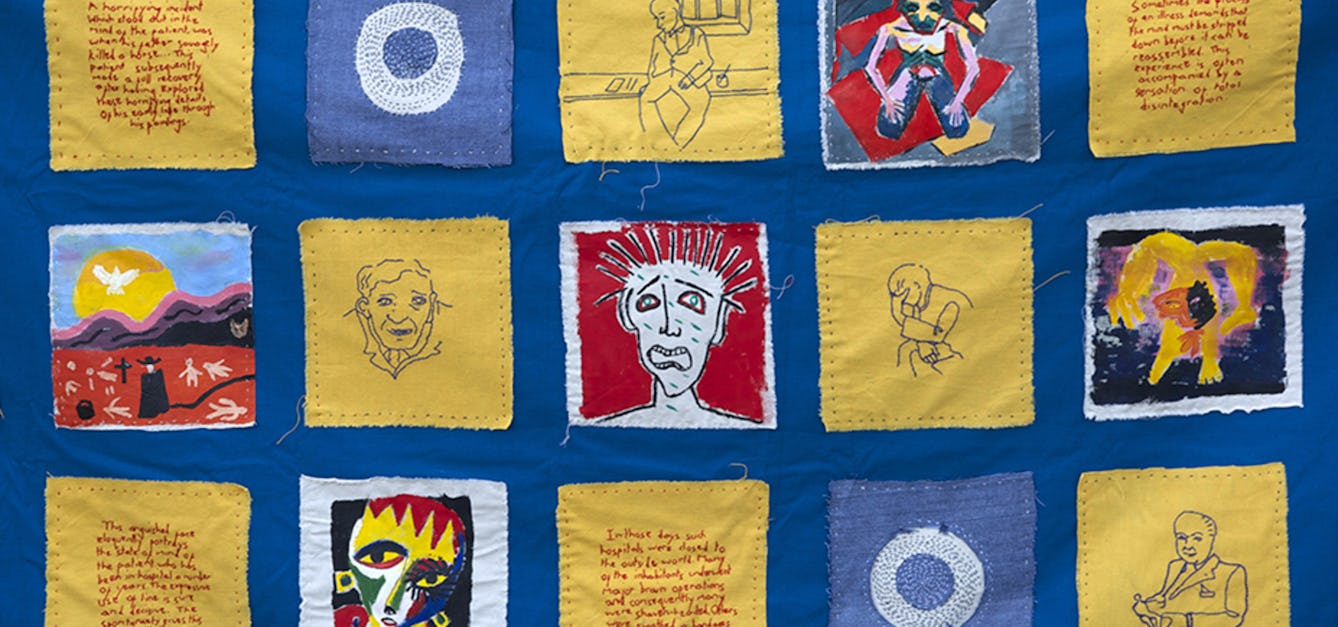Stories

- Article
Picturing mental health
Ron Hampshire created artworks while resident at Netherne psychiatric hospital. What can we learn from them?

- Article
Religion and mental health
At a time of extreme distress, Jamila Pereira found that the faith she had relied on was failing her. Here she describes how she found other ways to begin healing and finding happiness.

- Article
Chronic illness and the pressure to get well
When she was ill, Naomi Morris assumed she was on a straightforward journey from sickness to health. But what if our experiences of mental distress and ill health aren’t that neat?

- Article
A reflection on art in a mental hospital
Artist Beth Hopkins explains how she used her experience of researching the Adamson Collection to create an embroidered wall hanging.
Catalogue

- Books
- Online
Étude statistique sur l'aliénation mentale dans le Département du Bas-Rhin / par H. Dagonet.
Dagonet, Henri, 1823-1902.
- Books
- Online
Recherches statistiques sur l'alienation mentale faites a l'hospice de Bicêtre / par H. Aubanel et A.M. Thore.
Aubanel, Honoré, 1811-1863.Date: 1841
- Books
- Online
Statistics of insanity : being a decennial report of Bethlem Hospital, 1846-1855 / by W. Charles Hood.
Hood, William Charles, Sir.Date: 1856
- Books
- Online
A letter to Lord Robert Seymour : with a report of the number of lunatics and idiots in England and Wales / by Sir Andrew Halliday.
Halliday, Andrew, Sir, 1781-1839.Date: 1829
- Books
- Online
Études statistiques sur les aliénés traités dans l'asile de St-Jean-de-Dieu près Lyon, pendant les années 1838, 1839 et 1840 / par J.B. Carrier.
Carrier, Jean-Baptiste.Date: 1841








![Scutellaria baicalensis Georgi Lamiaceae. Baikal skullcap. Distribution: China. There are several hundred species of Scutellaria, also known as skull caps, so correct identification is important - in particular from Scutellaria lateriflora an American species known as Blue skullcap. The latter is used as an abortifacient and to expel placenta by the Cherokee and for cleaning the throat by the Iroquois (Austin, 2004). Much vaunted as a treatment for rabies with unlikely statistics (1,400 cases cured by one doctor alone). Also as ‘antispasmodic, nervine, [for] chorea, convulsions, tetanus, tremors, delirium tremens, [and as a] diaphoretic and diuretic'. Toxicity symptoms include mental confusion, stupor, headache, vertigo, photophobia, dilated pupils, difficulty in micturition, bradycardia, tremulousness and languor, followed by wakefulness and restlessness (Milspaugh, 1974). Hutchens (1991) reported that it reduces sexual desire and was used for almost every nervous illness. Scutellaria baicalensis contains baicalin, baicalein and wogonin (European Medicines Agency, September 2010). It is used in Traditional Chinese Medicine for treating inflammation, cancer, bacterial and viral infections of the lungs and gut and is one of the '50 Chinese herbs' in the lists of some authors. Scutellaria lateriflora (combined with Verbena officinalis, Passiflora incarnata and the seed of Avena sativa (oats) is licensed for use in Britain as a herbal medicine for temporary relief of mild symptoms of stress such as mild anxiety and to aid sleep, based upon traditional use only. Scutellaria baicalensis is not licensed for use in the UK (UK Medicines and Healthcare Products Regulatory Agency (MHRA)). Photographed in the Medicinal Garden of the Royal College of Physicians, London.](https://iiif.wellcomecollection.org/image/B0009188/full/282%2C/0/default.jpg)
